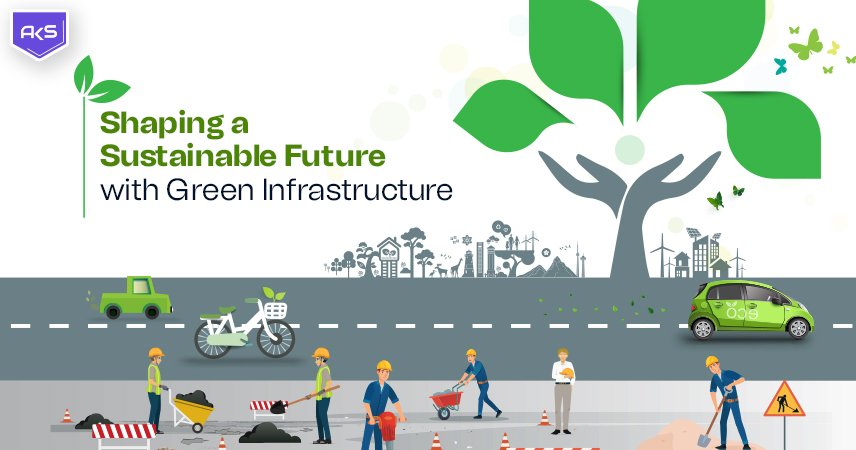Shaping a Sustainable Future with Green Infrastructure

In today’s rapidly urbanizing world, the need for sustainable development has become more pressing than ever. One key aspect of this sustainable future is the implementation of green infrastructure. But what exactly is green infrastructure, and how can it shape a more sustainable future?
Introduction
Green infrastructure refers to the network of natural and built elements designed to provide ecosystem services while also benefiting communities. It encompasses a wide range of features, from urban parks and green roofs to rain gardens and permeable pavements. The scope of green infrastructure extends beyond environmental conservation to include social and economic benefits as well.
Understanding Green Infrastructure
What is Green Infrastructure?
Unlike traditional grey infrastructure, which relies heavily on concrete and steel, green infrastructure utilizes natural processes to manage water, air, and land resources. It includes elements such as green spaces, wetlands, and vegetated rooftops that mimic natural ecosystems.
Types of Green Infrastructure
- Natural Elements
Natural elements of green infrastructure include forests, wetlands, rivers, and green spaces. These features provide habitat for wildlife, regulate temperature, and improve air and water quality.
- Built Elements
Built elements encompass engineered systems designed to mimic natural processes. Examples include green roofs, permeable pavements, and bioswales, which help manage storm water runoff and reduce the urban heat island effect.
Benefits of Green Infrastructure
Green infrastructure offers a myriad of benefits across environmental, social, and economic dimensions.
- Environmental Benefits
Green infrastructure helps mitigate the impacts of climate change by absorbing carbon dioxide, reducing heat buildup, and mitigating flooding. It also enhances biodiversity and improves soil health.
- Social Benefits
Access to green spaces has been linked to improved mental and physical health, reduced stress levels, and increased community cohesion. Green infrastructure provides opportunities for recreation, education, and cultural enrichment.
- Economic Benefits
Investments in green infrastructure yield long-term cost savings by reducing energy consumption, mitigating flood damage, and enhancing property values. It also creates jobs and stimulates local economies.
Challenges in Implementing Green Infrastructure
Despite its numerous benefits, the widespread adoption of green infrastructure faces several challenges.
- Lack of Awareness
Many communities are unaware of the benefits of green infrastructure or lack the knowledge to implement it effectively. Education and outreach efforts are needed to raise awareness and build support.
- Initial Costs
While green infrastructure offers long-term cost savings, the upfront costs can be prohibitive for some municipalities and property owners. Financial incentives and grants can help offset these expenses.
- Maintenance Issues
Proper maintenance is essential to ensure the effectiveness and longevity of green infrastructure projects. However, inadequate funding and resources can pose challenges for ongoing maintenance efforts.
Case Studies
Several successful examples demonstrate the effectiveness of green infrastructure in addressing environmental and societal challenges.
- Urban Parks
Cities around the world are revitalizing vacant lots and brownfields into vibrant urban parks. These green spaces provide recreational opportunities, improve air quality, and enhance community well-being.
- Green Roofs
Green roofs are becoming increasingly popular in urban areas, where space is limited. They help reduce energy consumption, manage stormwater runoff, and mitigate the urban heat island effect.
- Rain Gardens
Rain gardens are shallow depressions planted with native vegetation designed to capture and filter stormwater runoff. They improve water quality, reduce flooding, and provide habitat for pollinators.
Policy and Regulations
Supportive policies and regulations play a crucial role in promoting the adoption of green infrastructure.
Community Engagement
Engaging communities in the planning and implementation of green infrastructure projects fosters a sense of ownership and ensures projects meet local needs and preferences.
Technology and Innovation
Advancements in technology and innovation are driving the development of new and improved green infrastructure solutions.
Future Trends
The future of green infrastructure looks promising, with continued growth and expansion expected in the coming years.
Conclusion
In conclusion, green infrastructure offers a holistic approach to sustainable development, addressing environmental, social, and economic challenges simultaneously. By investing in green infrastructure, we can create healthier, more resilient communities while safeguarding the planet for future generations.


